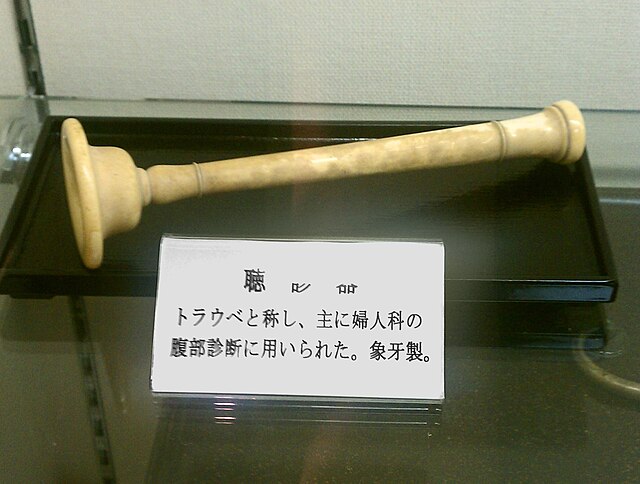The stethoscope is a medical device for auscultation, or listening to internal sounds of an animal or human body. It typically has a small disc-shaped resonator that is placed against the skin, with either one or two tubes connected to two earpieces. A stethoscope can be used to listen to the sounds made by the heart, lungs or intestines, as well as blood flow in arteries and veins. In combination with a manual sphygmomanometer, it is commonly used when measuring blood pressure.
This early stethoscope belonged to Laennec. (Science Museum, London)
Early stethoscopes
A Traube-type stethoscope in ivory
Early flexible tube stethoscopes. Golding Bird's instrument is on the left. The instrument on the right is the stethophone.
A sphygmomanometer, also known as a blood pressure monitor, or blood pressure gauge, is a device used to measure blood pressure, composed of an inflatable cuff to collapse and then release the artery under the cuff in a controlled manner, and a mercury or aneroid manometer to measure the pressure. Manual sphygmomanometers are used with a stethoscope when using the auscultatory technique.
BP 138/73 mmHg as result on electronic sphygmomanometer
Aneroid sphygmomanometer with an adult cuff
Aneroid sphygmomanometer dial, bulb, and air valve
Clinical mercury manometer








